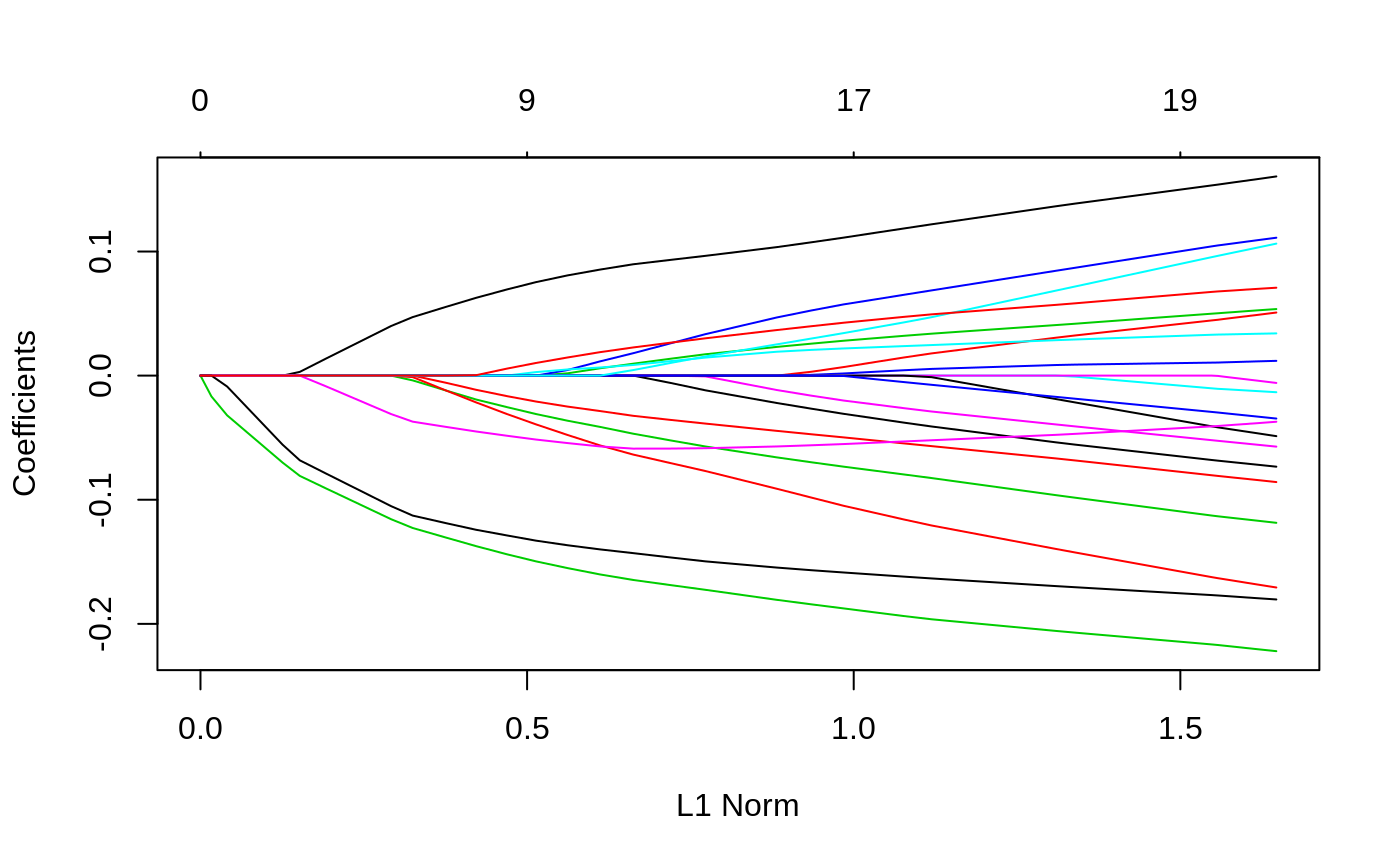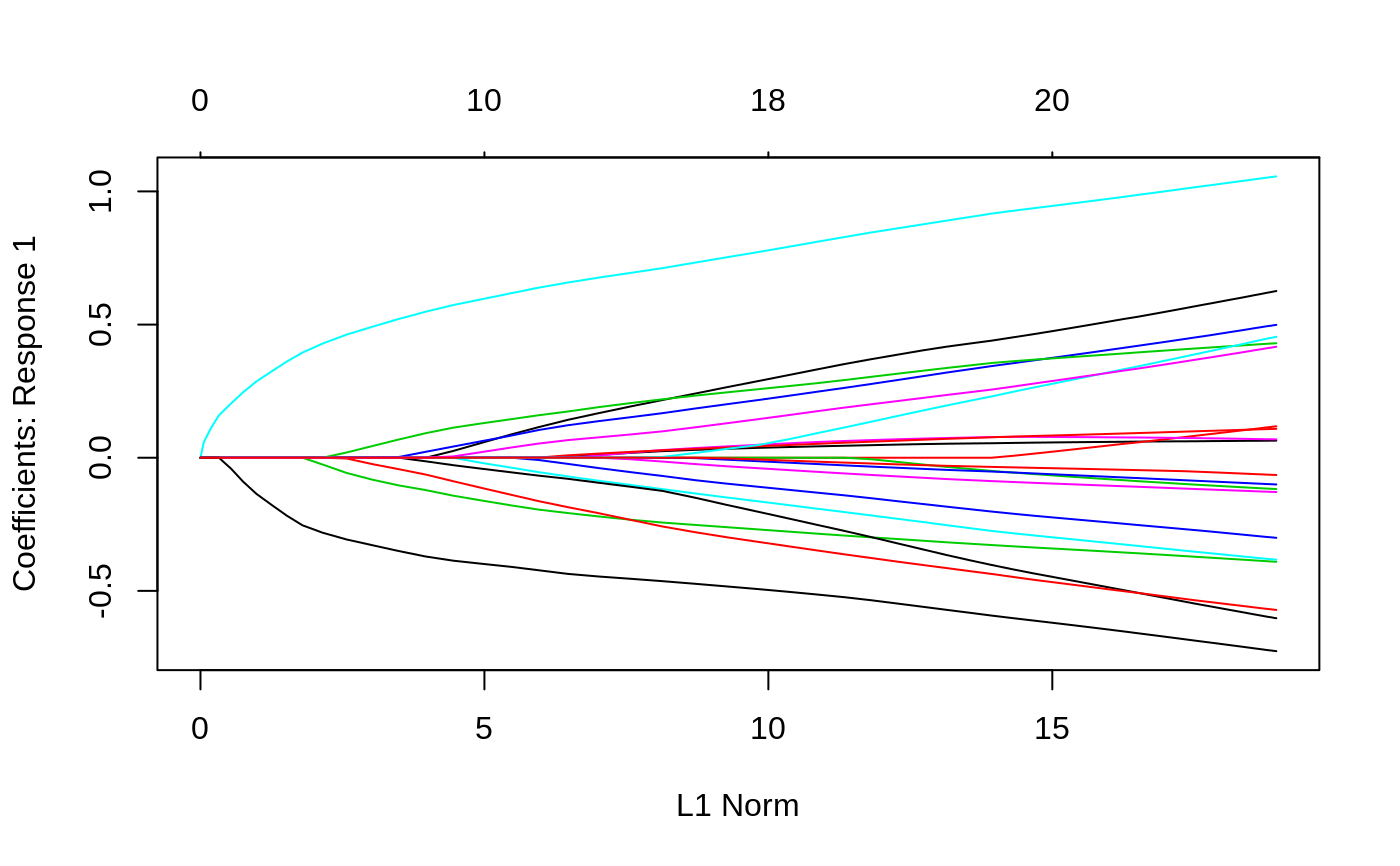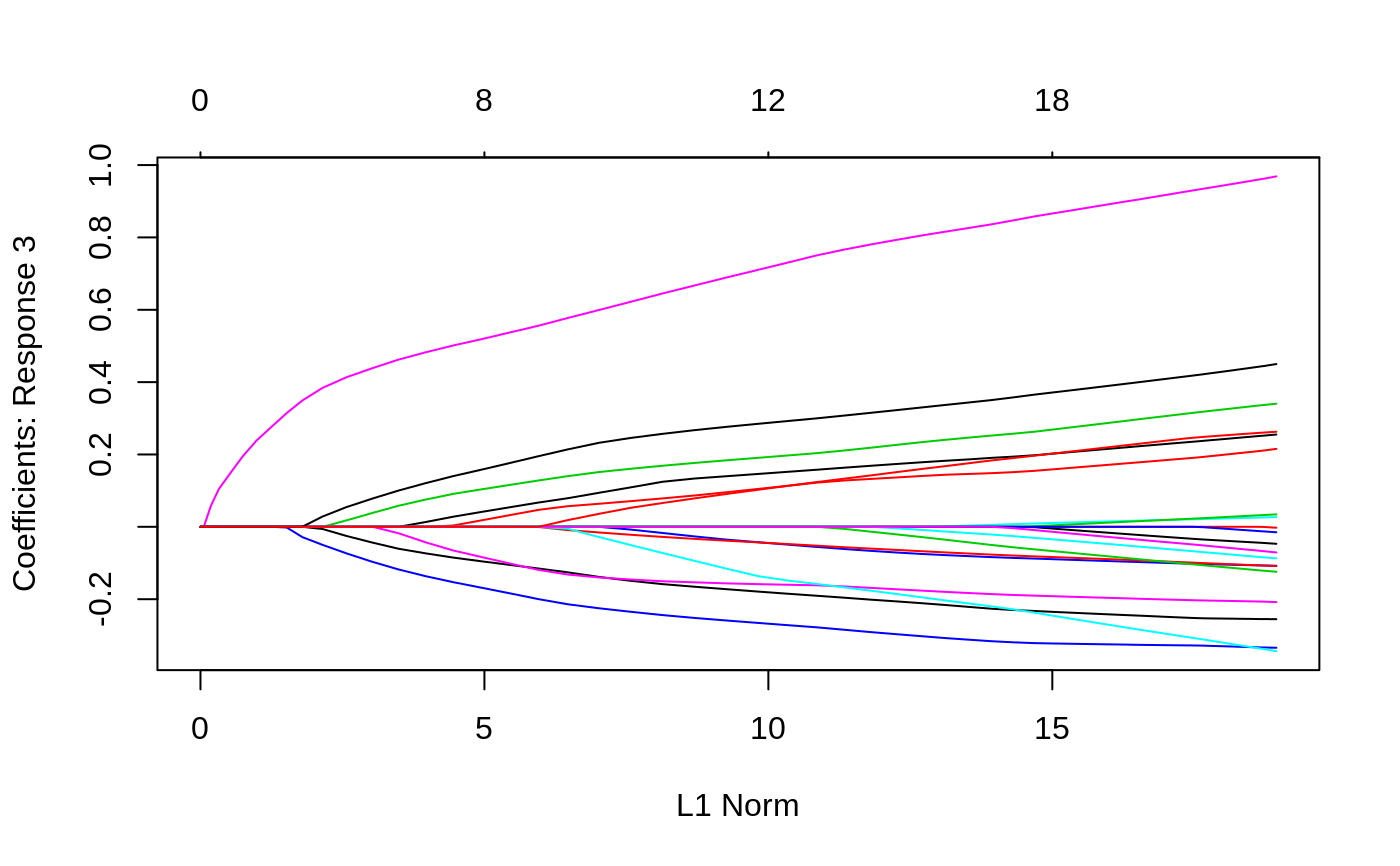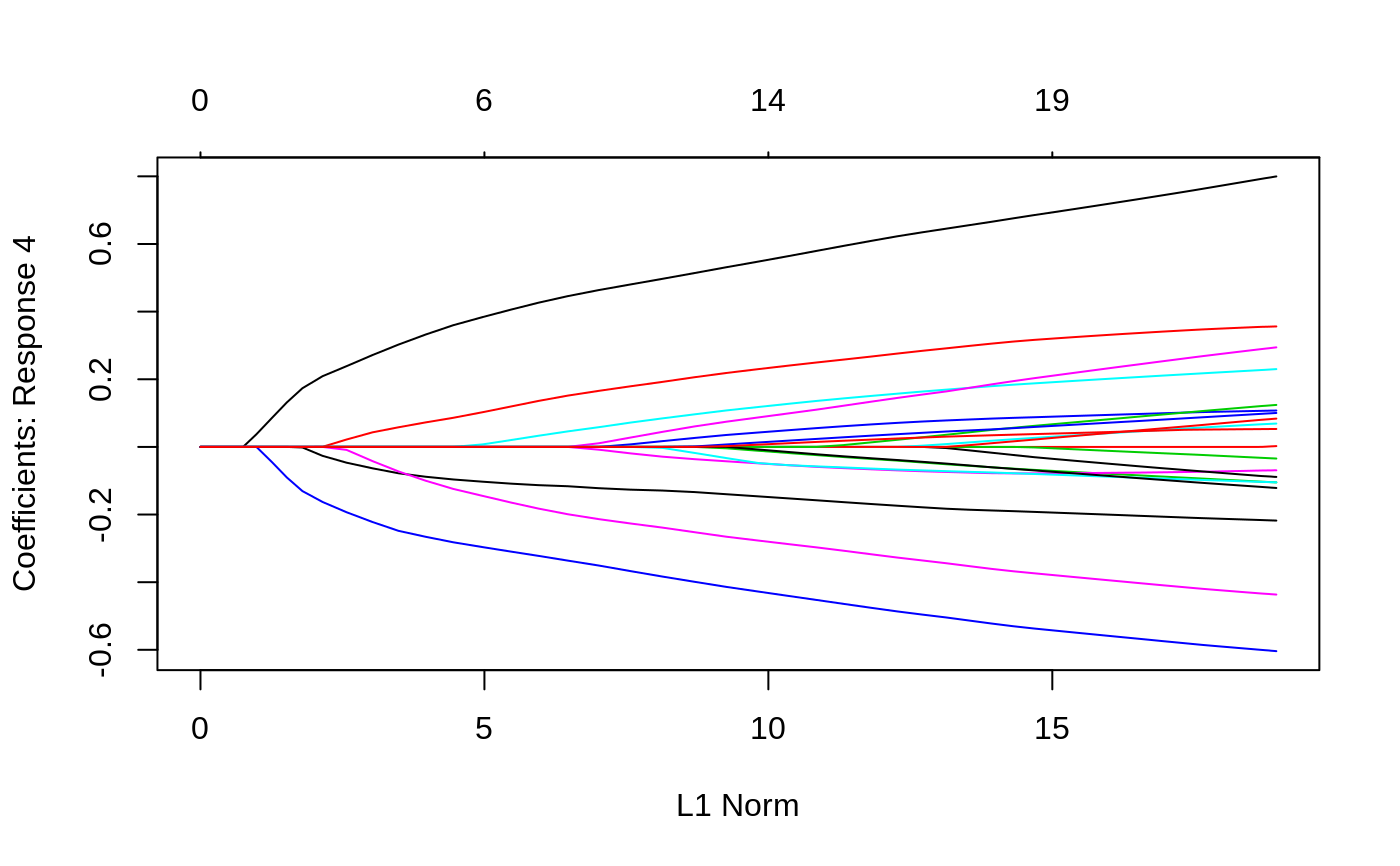plot coefficients from a "glmnet" object
plot.glmnet.RdProduces a coefficient profile plot of the coefficient paths for a fitted
"glmnet" object.
# S3 method for glmnet plot(x, xvar = c("norm", "lambda", "dev"), label = FALSE, ...) # S3 method for mrelnet plot(x, xvar = c("norm", "lambda", "dev"), label = FALSE, type.coef = c("coef", "2norm"), ...) # S3 method for multnet plot(x, xvar = c("norm", "lambda", "dev"), label = FALSE, type.coef = c("coef", "2norm"), ...) # S3 method for relaxed plot(x, xvar = c("lambda", "dev"), label = FALSE, gamma = 1, ...)
Arguments
| x | fitted |
|---|---|
| xvar | What is on the X-axis. |
| label | If |
| ... | Other graphical parameters to plot |
| type.coef | If |
| gamma | Value of the mixing parameter for a "relaxed" fit |
Details
A coefficient profile plot is produced. If x is a multinomial model,
a coefficient plot is produced for each class.
References
Friedman, J., Hastie, T. and Tibshirani, R. (2008) Regularization Paths for Generalized Linear Models via Coordinate Descent
See also
glmnet, and print, predict and coef
methods.
Examples
x=matrix(rnorm(100*20),100,20) y=rnorm(100) g2=sample(1:2,100,replace=TRUE) g4=sample(1:4,100,replace=TRUE) fit1=glmnet(x,y) plot(fit1)





